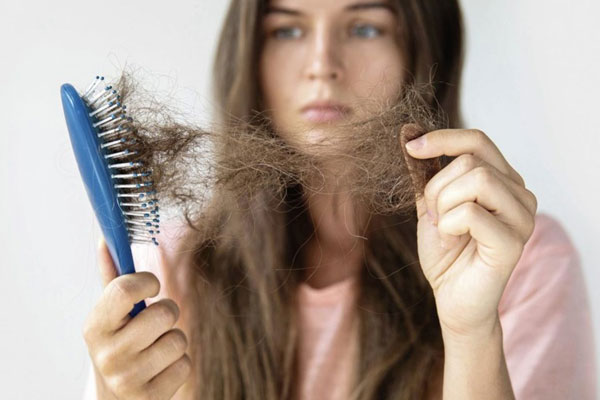Despite being a natural occurrence, hair loss can significantly impact our psychological and emotional wellbeing, being linked to depression, anxiety, and in some cases social withdrawal.
About half of men over the age of 50 have some hair loss and nearly half of women experience hair loss in their lifetime, and in most cases, it’s a completely normal part of getting older, much like the forming of lines and wrinkles.

Image credit: Irishnews
Today, we will share some of the most important things to consider when experiencing hair loss.
1. We lose hair every day.
Hair loss occurs naturally every day and it is normal to notice hair in the brush and on the comb.
Normally the hair lossq is around 50-150 hairs a day depending on natural hair density.
2.Not all types are the same.
Hair volume is determined by three factors: The number of hairs per centimetre of scalp, the proportion of active/productive hair follicles, and the thickness of the hair shafts. Almost all hair disturbances can be characterised by a change in one or any combination of these three factors.
Two of the most common types of hair loss are Androgenetic Alopecia and Alopecia Areata.
Many women experience Androgenetic Alopecia during the ageing process.
For men, hair loss can begin after puberty and progress over the years. Alopecia Areata, on the other hand, is an autoimmune condition which causes the hair to fall out in small clumps.
3.Hair loss is common post-partum.
There are two common and sometimes significant causes of hair loss immediately after pregnancy.
The first is the reduction in the increased percentage of productive hair follicles.
The second common cause for an increase in loss is often caused by nutritional deficiencies and the stress of having less rest and sleep and looking after a newborn.
This type of hair loss is a temporary condition and usually resolves within a year.
4.Vitamin deficiency can play a role.
Changes in skin and hair often indicate an underlying vitamin deficiency.
If you notice your hair shedding more than usual, it may be worth getting your iron and vitamin D levels checked.
5.Stress can be a trigger, psychosocial effects can be as great as physical.
Stress is a common cause of diffuse hair loss and Seborrheic scaling on the scalp. Prolonged stress can reduce the percentage of active hair follicles therefore reducing hair density. Stress can also exacerbate Alopecia Areata and Male Pattern Baldness.
Fortunately, this form of hair loss usually resolves, and hair grows back.
With hair strongly linked to identity and self-image, the loss of scalp hair can cause significant distress. Alopecia Areata (AA) has been found to impact confidence and self-esteem, with research revealing that 77.6% of adults with AA had an impaired quality of life due to the disease.
Scalp hair loss and eyebrow loss were cited as the areas of biggest concern, with the most frequent diagnoses named as depression, generalised anxiety disorder, and social phobia.
PRP (Platelet Rich Plasma) can be useful in preventing both male and female pattern hair loss. This involves taking a small quantity of your own blood, separating out the blood cells from the platelet-rich plasma (which triggers tissue regeneration and repair), and injecting this plasma into the scalp, to encourage hair growth.
6. Hair transplants can work for women too.
This is a surgical redistribution of hairs from the back and sides of the scalp where male/female pattern baldness does not occur, to the top of the scalp where thinning is common.
Hair transplantation is an effective and usually permanent hair thickening option for men and women who experience pattern hair loss, and it is also used to address or disguise hair loss as a result of scarring on the face and scarring alopecia.
7. Medication is available.
Treatments such as corticosteroid injections may be advised if alopecia is diagnosed, which can help to reduce the inflammation that can lead to hair loss.
8. When to see a professional.
When people become aware of an increase in the visibility of their scalp, a reduction in the size of their ponytail or more hair in the plug hole they should see the attention of a trained and registered Trichologist.
